Transforming growth factor-β1 small interfering RNA inhibits growth of human embryonic lung fibroblast HFL-I cells in vitro and defends against radiation-induced lung injury in vivo
- Authors:
- Zhonghua Lu
- Yan Ma
- Shuyu Zhang
- Fenju Liu
- Meizhen Wan
- Judong Luo
-
View Affiliations
Affiliations: Department of Radiotherapy, Changzhou Tumor Hospital, Soochow University, Changzhou, Jiangsu 213001, P.R. China, Jiangsu Provincial Key Laboratory of Radiation Medicine and Protection, School of Radiation Medicine and Protection, Soochow University, Suzhou, Jiangsu 215123, P.R. China
- Published online on: November 11, 2014 https://doi.org/10.3892/mmr.2014.2923
-
Pages:
2055-2061
Metrics:
Total
Views: 0 (Spandidos Publications: | PMC Statistics:
)
Metrics:
Total PDF Downloads: 0 (Spandidos Publications: | PMC Statistics:
)
This article is mentioned in:
Abstract
In the present study, a human transforming growth factor‑β1 (TGF‑β1) small interfering RNA (siRNA) plasmid vector (TGF‑β1‑siRNA) was constructed to investigate its effects on the proliferation and differentiation of human lung fibroblasts in vitro and its interference effects on radiation‑induced lung injury in vivo. Reverse transcription quantitative polymerase chain reaction and enzyme linked immunosorbent assay revealed that the mRNA and protein expression of TGF‑β1 in the HFL‑I cells were inhibited by TGF‑β1‑siRNA and flow cytometry demonstrated a significant increase in apoptosis of the HFL‑I cells. Adult, female, specific‑pathogen‑free C57BL/6 mice were used in the in vivo animal investigations and were randomly divided into the four following groups: control without any treatment, radiation alone, radiation followed by empty vector transfection and radiation followed by TGF‑β1‑siRNA vector transfection. Hematoxylin and eosin and Van‑Gieson staining revealed that certain radiation‑induced histopathological changes of the lung, including inflammation, edema, the density of surface pulmonary interstitial collagen fibers in the alveolar septum, TGF‑β1‑positive reactions in alveolar epithelial cells and pulmonary interstitial macrophages were less marked in the mice transfected with TGF‑β1‑siRNA compared with the mice without transfection or those transfected with empty vectors. The serum levels of TGF‑β1 levels in the irradiated mice increased significantly at four weeks and peaked at eight weeks after radiation, compared with the control. Serum levels of TGF‑β1 in the irradiated mice transfected with TGF‑β1‑siRNA also increased gradually and a significant difference was observed compared with those irradiated without transfection. The mRNA expression levels of TGF‑β1 in the mice transfected with TGF‑β1‑siRNA were markedly lower compared with those of the other radiation groups. The present study suggested that the TGF‑β1‑siRNA vector reduced the activity of TGF‑β1 by downregulating the mRNA expression of TGF‑β1 and thereby effectively suppressing inflammatory reactions and defending against radiation‑induced lung injury.
View Figures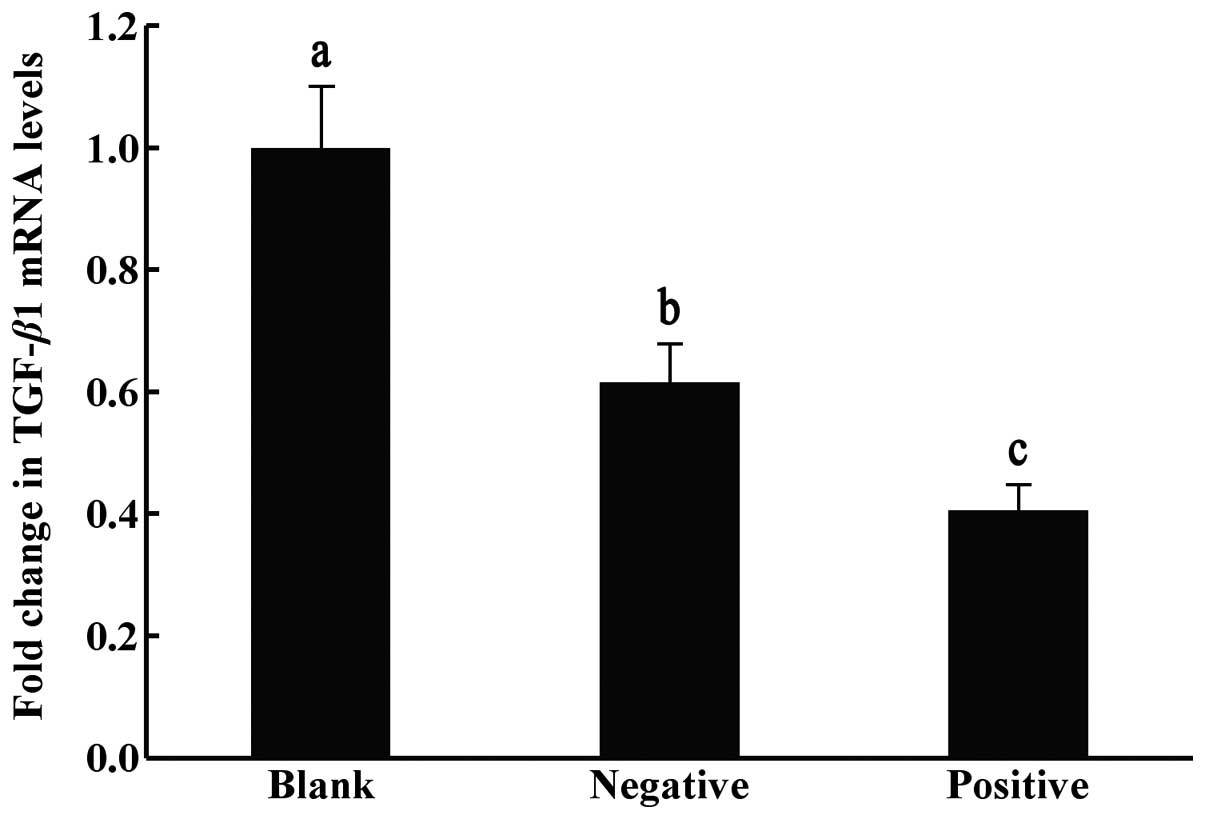 |
Figure 1
|
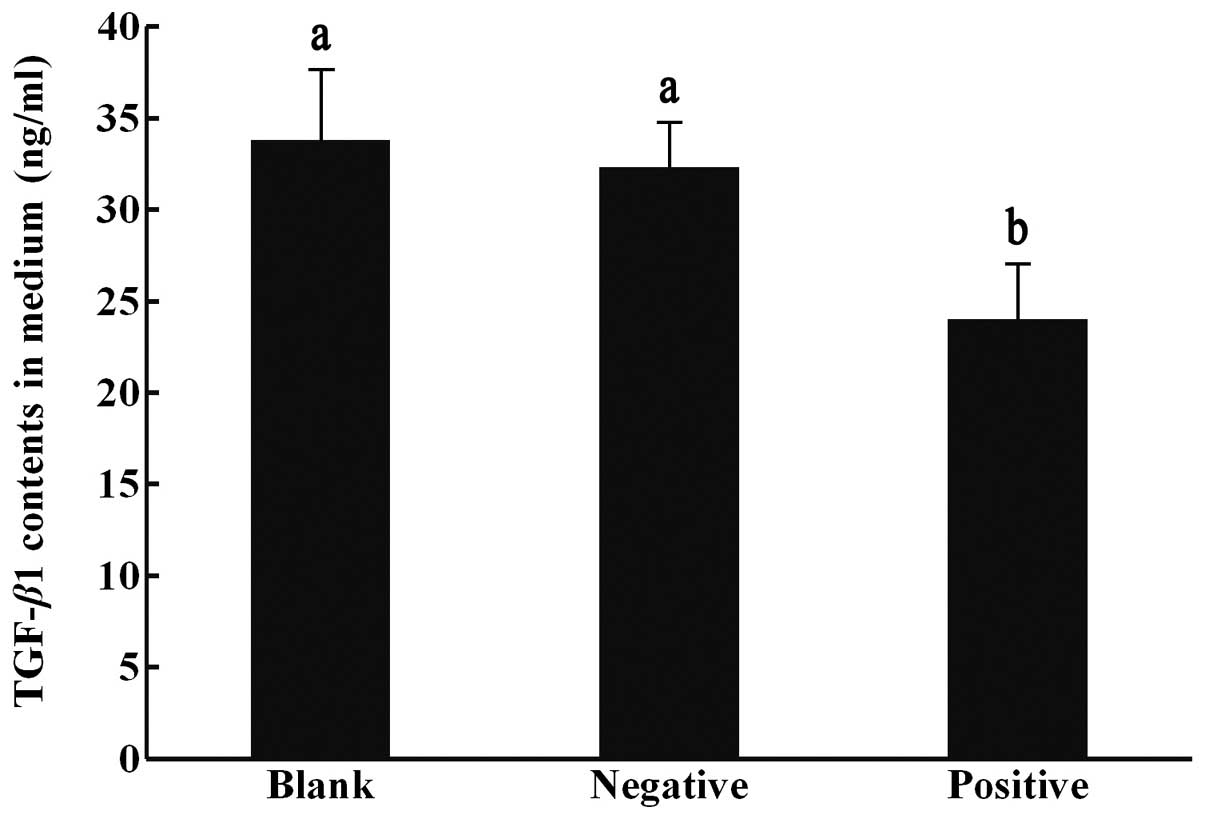 |
Figure 2
|
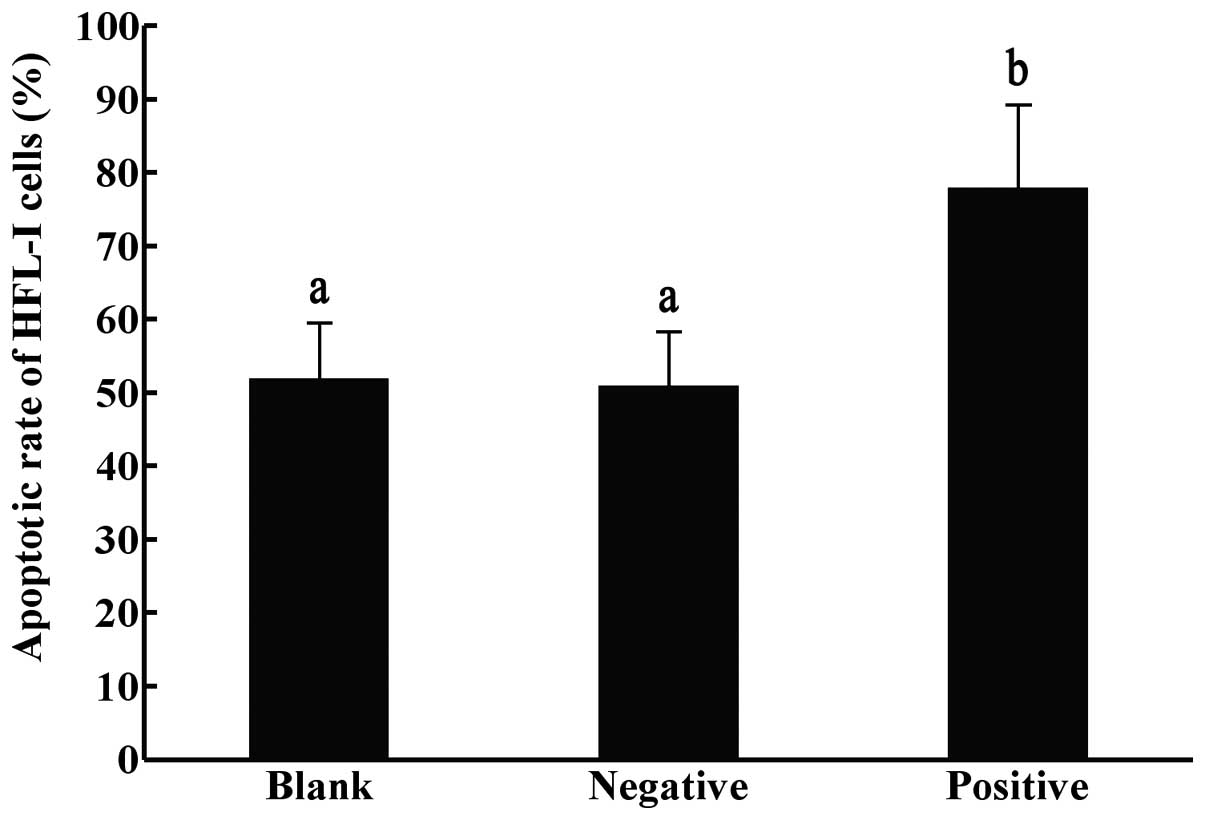 |
Figure 3
|
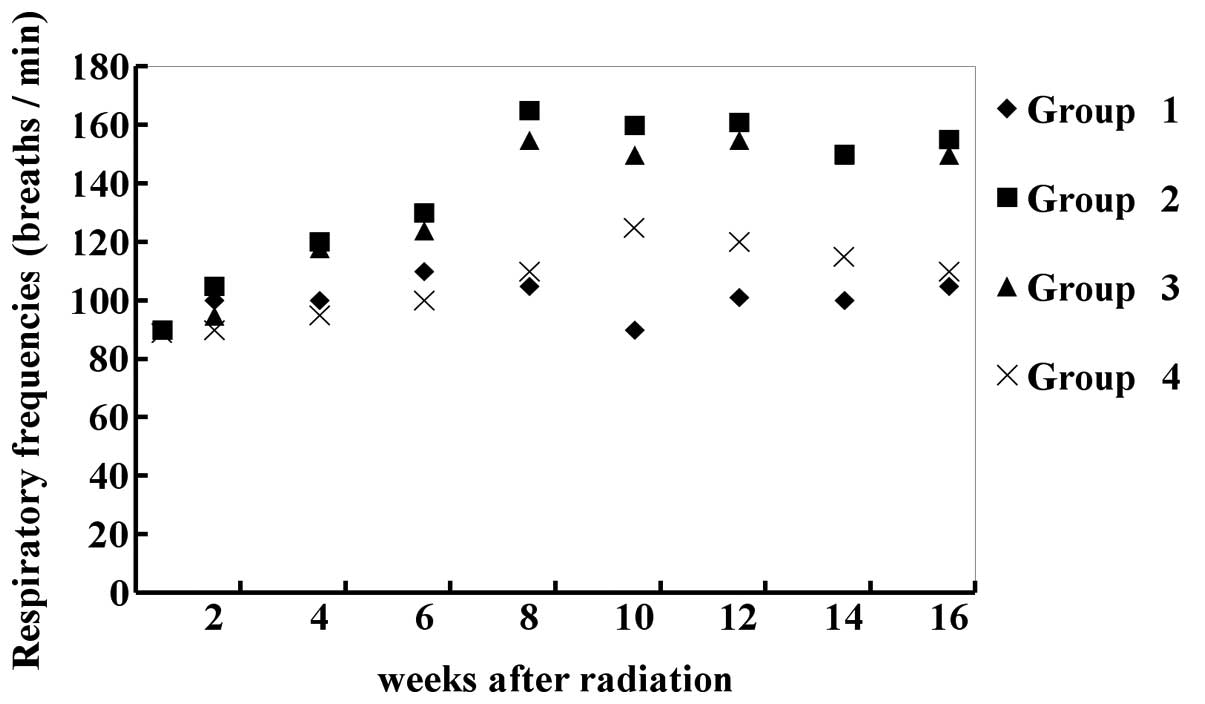 |
Figure 4
|
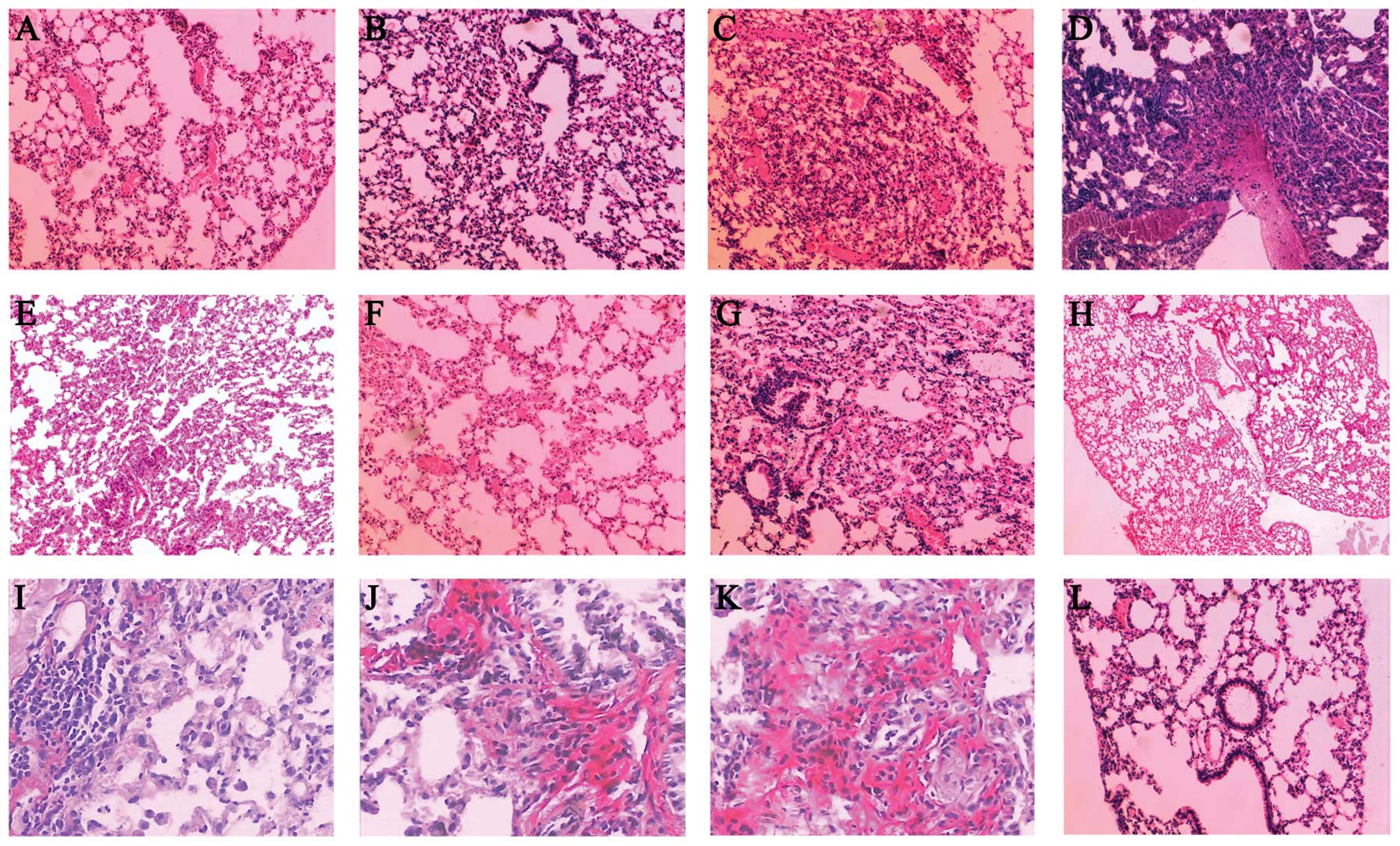 |
Figure 5
|
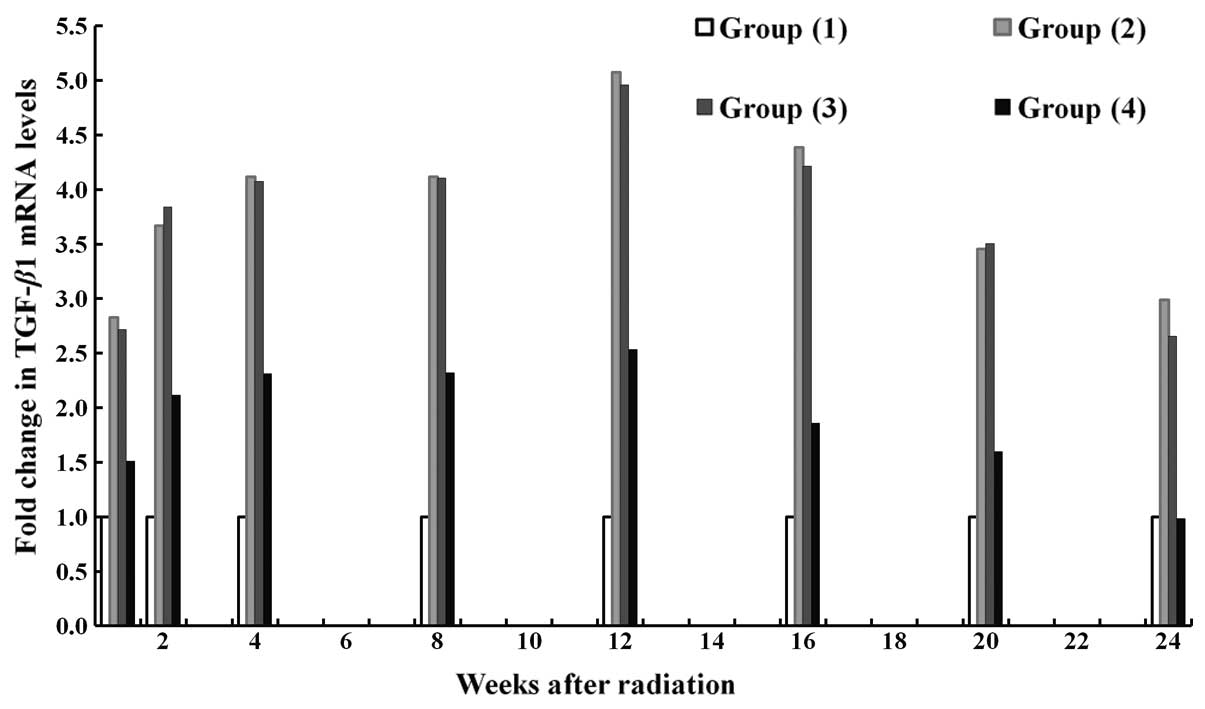 |
Figure 6
|
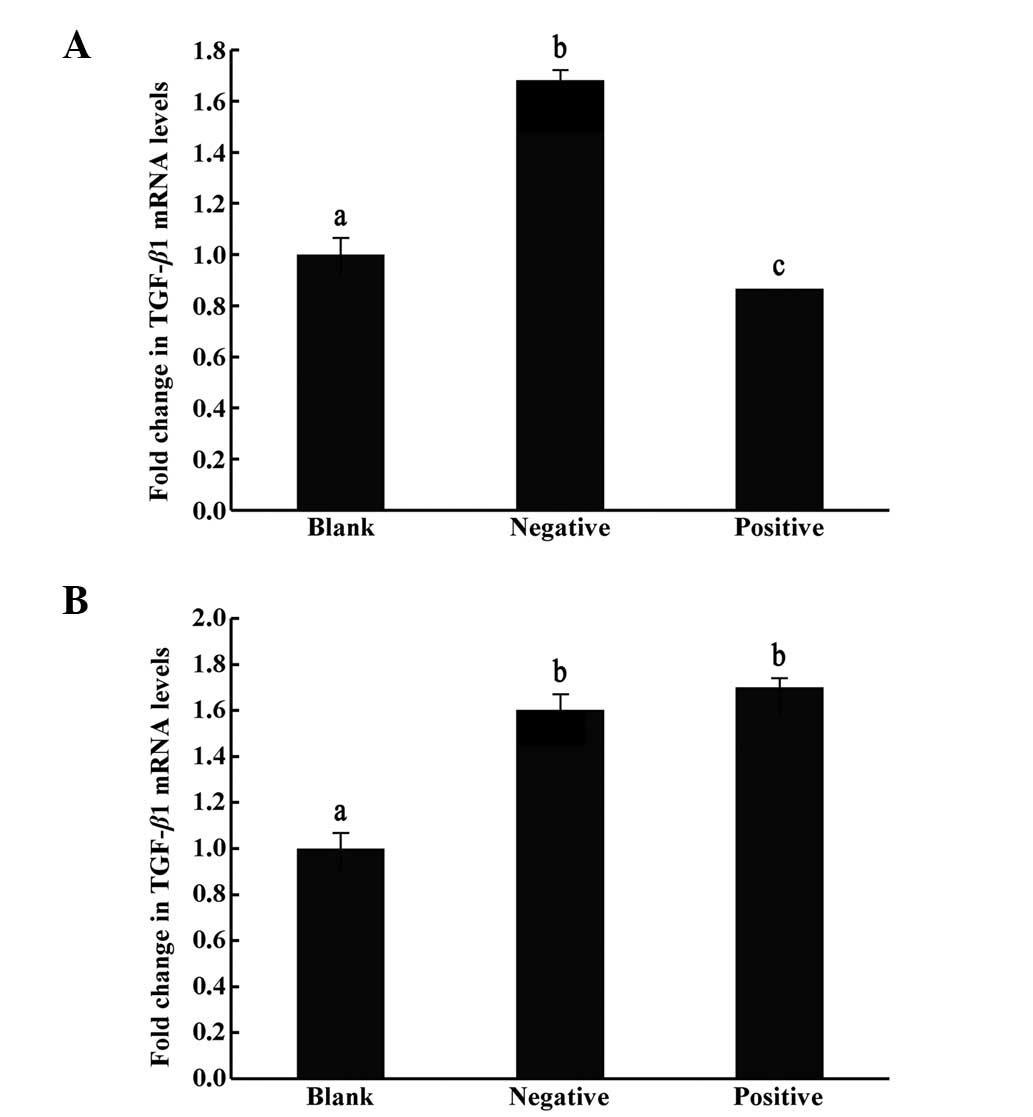 |
Figure 7
|
View References
|
1
|
Anscher MS, Marks LB, Shafman TD, et al:
Risk of long-term complications after TFG-beta1-guided
very-high-dose thoracic radiotherapy. Int J Radiat Oncol Biol Phys.
56:988–995. 2003. View Article : Google Scholar : PubMed/NCBI
|
|
2
|
Novakova-Jiresova A, Van Gameren MM,
Coppes RP, Kampinga HH and Groen HJ: Transforming growth
factor-beta plasma dynamics and post-irradiation lung injury in
lung cancer patients. Radiother Oncol. 71:183–189. 2004. View Article : Google Scholar : PubMed/NCBI
|
|
3
|
Fire A, Xu S, Montgomery MK, Kostas SA,
Driver SE and Mello CC: Potent and specific genetic interference by
double stranded RNA in Caenorhabditis elegans. Nature. 391:806–811.
1998. View Article : Google Scholar : PubMed/NCBI
|
|
4
|
Reynolds A, Leake D, Boese Q, Scaringe S,
Marshall WS and Khvorova A: Rational siRNA design for RNA
interference. Nat Biotechnol. 22:326–330. 2004. View Article : Google Scholar : PubMed/NCBI
|
|
5
|
Schallenkamp JM, Miller RC, Brinkmann DH,
Foote T and Garces YI: Incidence of radiation pneumonitis after
thoracic irradiation: Dose volume correlates. Int J Radiat Oncol
Biol Phys. 67:410–416. 2007. View Article : Google Scholar : PubMed/NCBI
|
|
6
|
Kim SH, Lim DJ, Chung YG, Cho TH, Lim SJ,
Kim WJ and Suh JK: Expression of TNF-alpha and TGF-beta 1 in the
rat brain after a single high-dose irradiation. J Korean Med Sci.
17:242–248. 2002. View Article : Google Scholar : PubMed/NCBI
|
|
7
|
Evans ES, Kocak Z, Zhou SM, et al: Does
transforming growth factor beta1 predict for radiation induced
pneumonitis in patients treated for lung cancer. Cytokine.
35:186–192. 2006. View Article : Google Scholar : PubMed/NCBI
|
|
8
|
Chen Y, Williams J, Ding I, et al:
Radiation pneumonitis and early circulatory cytokine markers. Semin
Radiat Oncol. 12:S26–S33. 2002. View Article : Google Scholar
|
|
9
|
Nagashio Y, Ueno H, Imamura M, et al:
Inhibition of transforming growth factor beta decreases pancreatic
fibrosis and protects the pancreas against chronic injury in mice.
Lab Invest. 84:1610–1618. 2004. View Article : Google Scholar : PubMed/NCBI
|
|
10
|
Martin M, Lefaix JL and Delanian S:
TGF-beta1 and radiation fibrosis: a master switch and a specific
therapeutic target? Int J Radiant Oncol Biol Phys. 47:277–290.
2000. View Article : Google Scholar
|
|
11
|
Chiang CS, Liu WC, Jung SM, et al:
Compartmental responses after thoracic irradiation of mice: strain
differences. Int J Radiat Oncol Biol Phys. 62:862–871. 2005.
View Article : Google Scholar : PubMed/NCBI
|
|
12
|
Volarevic M, Smolic R, Wu CH and Wu GY:
Potential role of RNAi in the treatment of HCV infection. Expert
Rev Anti Infect Ther. 5:823–831. 2007. View Article : Google Scholar : PubMed/NCBI
|
|
13
|
Shimizukawa M, Ebina M, Narumi K, Kikuchi
T, Munakata H and Nukiwa T: Intratracheal gene transfer of decorin
reduces subpleural fibroproliferation induced by bleomycin. Am J
Physiol Lung Cell Mol Physiol. 284:L526–L532. 2003.PubMed/NCBI
|

















